
Alan Rath @ San Jose Institute of Contemporary Art (ICA). Virtual Unreality, the first-ever retrospective of this pioneer of electronic, digital and robotic sculpture, examined a career that took shape in the mid-1980s, back when a technologically enabled future seemed like a good thing. At the time, Rath’s work carried dark overtones, seen in CRT-based sculptures filled with shifty eyeballs, wagging tongues and contorted faces. Then, as the popular view of technology began to shift, so did Rath’s work; it turned playful. The best examples in this show were the interactive, kinetic sculptures made of feathered “limbs” driven by unseen motors and earlier works made of speaker cones. The latter, arrayed like blossoms, pulsated silently, introducing notions of AI into the art world long before the term entered everyday parlance. All these developments are documented in a sumptuously illustrated catalog that contains an augmented reality app that allows you to view the sculptures are they were designed to be seen: in motion. To purchase contact: info@hosfeltgallery.com.
Annabeth Rosen @ CJM. In this 20-year survey, "more than 100 sculptures and drawings were presented in an expansive and brilliantly designed installation, demonstrating a bricoleur's can-do indefatigability," wrote Maria Porges. "Rosen continually invents ways to manipulate

clay: adding, subtracting, lashing together multiple bits of fired clay with baling wire or rubber straps cut from inner tubes and incorporating broken fragments into other pieces, in an ongoing, near-constant process of fearless experimentation” that yields ungainly, bulbous forms that look like they could have been dredged from the imagination of Jules Verne. To January 19,
György Kepes @ Robert Koch. A leader of the Bauhaus, Kepes embodied, perhaps
Kathy Butterly @ Manetti Shrem. Like her early mentors, Voila Frey and Robert Arneson, Butterly seeks to dissolve the physical and conceptual barriers separating sculpture from painting. She fuses the two so seamlessly that the glazed parts of her works have been favorably compared to the pictures of Mary Heilmann, Amy Sillman and Helen Frankenthaler — something that would have never happened a generation ago. Applied to drooping, folded, crimped, tired-looking shapes that alternately recall women’s handbags and intertwined human body parts, her exuberant glazes, executed in colors ranging from earth tones to electric reds and yellows, serve as psychoanalytic registers of a well-examined life. Through December 29.
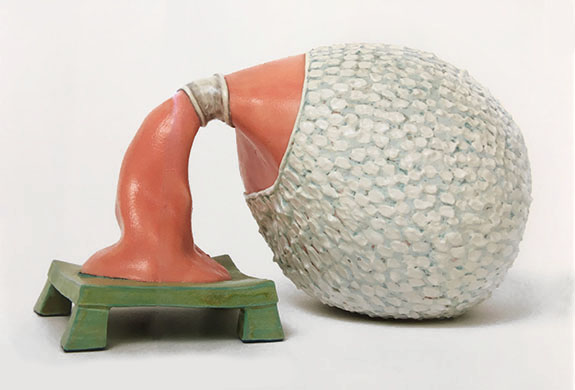
Vija Celmins @ SFMOMA. Her pencil drawings of oceans, spider webs, deserts and night skies qualify as world wonders for recalibrating what it means to observe and render the natural world with uncanny precision. Celmins also performs similar feats of photorealistic 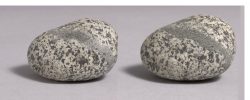 representation with three-dimensional objects, most notably rocks. Her bronze-cast fakes were displayed next to the real ones on which they were modeled, and any differences, if they existed, were impossible to detect, so thorough is the artist’s mastery. And while most everyone, including the artist, criticized the exhibition for being too big, it stands as one of this year’s triumphs, affirming, for artists and viewers alike, the value of looking deeply.
representation with three-dimensional objects, most notably rocks. Her bronze-cast fakes were displayed next to the real ones on which they were modeled, and any differences, if they existed, were impossible to detect, so thorough is the artist’s mastery. And while most everyone, including the artist, criticized the exhibition for being too big, it stands as one of this year’s triumphs, affirming, for artists and viewers alike, the value of looking deeply.
Monir Farmanfarmaian & Camille Utterback @ Haines. Farmanfarmaian, who died last April at age 97, left behind a legacy that placed her among Iran's most prominent post-WWII

When I Remember I See Red: American Indian Art and Activism in California @ Crocker Art Museum. As an advocate for Native American causes, the late artist/educator Frank LaPena had few peers. One of his last creative acts was organizing, with SF State Professor Mark Dean Johnson, a traveling exhibition timed to coincide with the 50th anniversary of the Occupation of Alcatraz, the event that launched Red Power activism. The roster of this show reads like a who's who of the field: Harry Fonseca, L.frank, Jean LaMarr, Brian Tripp, Fritz Scholder, George Longfish, Judith Lowry and many others. “Drawing inspiration from Native stories, ethics, spiritual traditions long considered obstacles to capitalist

expansion and, therefore irrelevant to mainstream culture, the art in the exhibition cuts from both sides of a blade forged in the hybrid language of contemporary art,” wrote Elaine O’Brien. “One side exposes the linked crimes of ecocide and genocide perpetrated by the dominant powers; the other presents an inspirational model of survival and recovery in the Anthropocene…a coherent vision of a just and balanced world.” To January 26.
Oliver Lee Jackson @ Rena Bransten. Jackson, 84, has been exhibiting since the 1960s, but his paintings, wrote Derek Conrad Murray, “feel very much of the moment” – 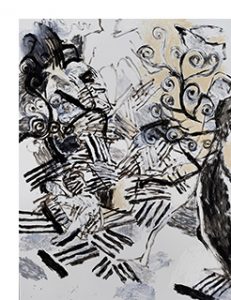
Andrew Russell @ Oakland Museum. Russell (1829—1902) was hired by Union Pacific to document one of the most significant events in American history: the completion of the transcontinental railroad. Because Russell used a large-format camera, the curators were able to take his glass collodion images and enlarge them to monumental scale, affording viewers the ability to travel backward in time – and discern all the details. Of one of the most remarkable images, of the two engines facing each other at Promontory Point, Utah on May 10, 1869,
 |
Renny Pritikin wrote: “We are the first people capable of looking into the eyes of those who were alive 150 years ago. We can see the nuances of how they wore their clothing, the tilt of their hats, and their facial expressions suggesting how pioneers felt about being out there in the middle of nowhere among the desert weeds.” Russell may have been assigned to glorify the achievements of industry, but his photos wound up revealing “how an entire cultural consciousness was being imposed on both the people and the land.”
John Law @ Pro Arts. Law is best known as the founder of Burning Man, but his career as an all-purpose provocateur stretches back decades, encompassing neo-Dadaist performances, happenings and actions up and down the West Coast staged by the Suicide Club, the Cacophony Society and the Billboard Liberation Front. Law's antics included formal dinner parties on the Golden Gate Bridge, creating neon signage for Eve Ensler's The Vagina Monologes, nude cable car rides, pub crawls in Santa suits and hijacking billboards. All were
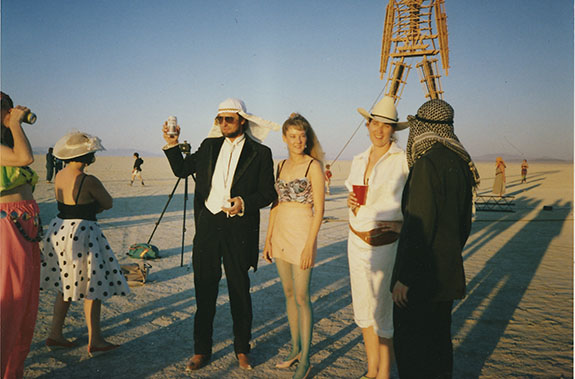
documented in this superbly researched career retrospective whose twists and turns, reviewed by Mark Van Proyen, outline the deliciously subversive possibilities that can be realized when art is conceived and executed outside institutional boundaries. “The fact that Law's activities may not be art allows for the enticing possibility that their core motivations might be too dangerous to be domesticated and sanitized by the Catch 22 logic embedded in the art conundrum: Namely, that if something looks too much like art, it probably isn't, but if something does not readily appear to be art, it may well be provocative or even transgressive enough to be defined as a model example of such.”

Rina Banerjee @ San José Museum of Art. This 20-year retrospective wrote Soraya Murray, “offered an aesthetically overwhelming view of an artist whose installations, assemblages and drawings tackle postcolonialism and globalization and the engines of capitalism and excess consumption that drive them. Willful and difficult objects, Banerjee’s imaginings tread the line between sacred and profane expressions of global interconnection. Sculptures, installations and works on paper point to identity and how it is continuously negotiated under the duress produced by transnational flows of capital, goods, technologies and

ideologies." The result: "complicated feelings about what it means to live as a postcolonial subject and a product of globalization while fashioning one’s identity from the detritus of empire.”
Michael Jang @ McEvoy. In 2001, Jang, an unknown commercial photographer, submitted a 40–year-old portfolio of prints that nobody except friends and family had ever seen to SFMOMA. The act wasn’t as audacious as it might seem. The museum’s photography department, then under the direction of Sandra Phillips, maintained a policy of reviewing portfolios from anyone who cared to submit them. Jang apparently hit the mark. Phillips acquired several prints for the museum's collection, and soon began planning the retrospective on view here. The show roams from uproarious photos of his family to celebrity shots snagged at the Beverley Hilton to down-and-dirty documents of SF’s Punk Rock scene in the late 1970s. Though he was initially motivated to take up photography by Arbus and Winogrand, the portrait that emerges from the exhibition that of an inspired street shooter with a playful and sometimes wacky sense of humor. To January 18, 2020.

M. Louise Stanley @ Anglim Gilbert. What makes M. Louise Stanley’s figurative
Wanxin Zhang @ Museum of Craft and Design. The artist's life-sized figures fuse the ancient tradition of Asian ceramic sculpture (as seen in the terracotta soldiers excavated in 
Ann Weber @ Dolby Chadwick. For the past few decades, the LA artist has been building exuberant sculptures made of found cardboard packaging from which she creates exotic shapes that recall everything from crash-landed spacecraft to freakishly abstract human figures. The latter, exhibited in this show at life-size, were arrayed against similarly constructed backdrops to uproarious theatrical effect, one that called to mind groups of people animatedly conversing, gesticulating and butting heads. An added pleasure was the modular nature of the installation. At regular intervals, you could watch gallery personnel moving the pieces into different groupings – dyads, trios, quartets – each of which produced different “inter-personal” dynamics. For Weber, the show felt like a breakthrough event.
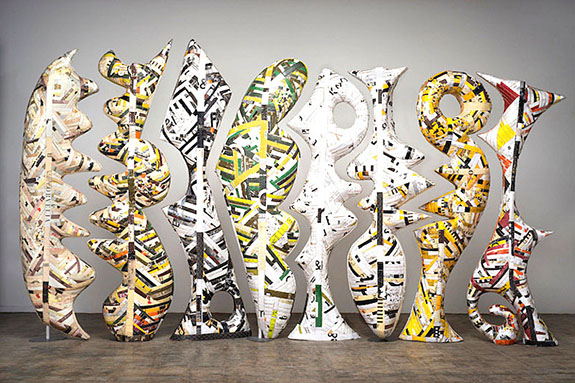
Meridel Rubenstein @ Brian Gross. Photography is good at recording facts. But the feelings a photographer experiences aren't always conveyed to viewers. To bridge that gap,
Cate White @ Mills College Art Museum. When White’s paintings of black subjects were initially unveiled, the artist, who is white, came under fire for the same reasons Dana Schutz did when she portrayed the slain body of Emmett Till. So, we asked two African-American critics, Soraya Murray and Derek Conrad Murray, to weigh in. Their conclusions: Racial bans of the sort aimed at Schutz “are deeply disturbing,” and, most importantly, White’s paintings, drawings and installations stand on their own merits. “A mind map of liberal angst over the inhumanities of advanced capitalism,” was how the Murrays described one large multi-part work on paper. Its components, they wrote, “create a concentrated psychological tension that skips between themes of pharmaceuticals, toxic masculinity, brutality, cheap advertising and outsider art…reflective of “an anti-establishment spirit made famous in the 1990s by the so-called ‘Beautiful Losers’ associated with the Mission School.”
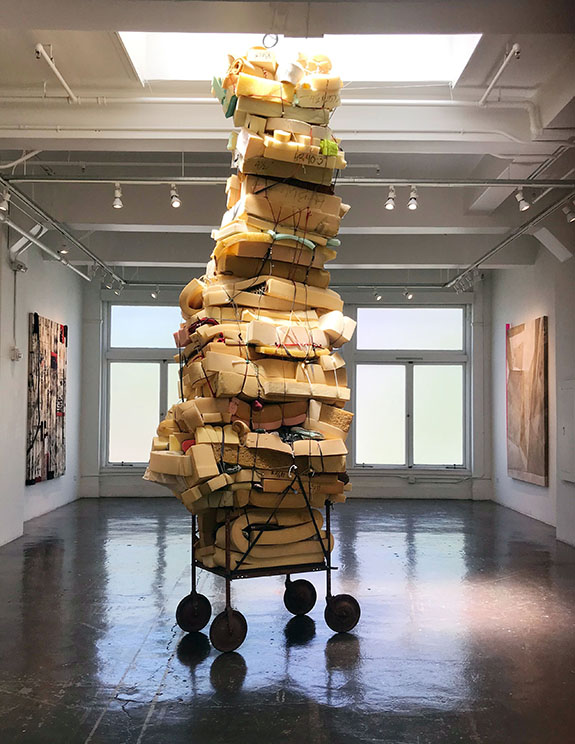
Amy Trachtenberg @ Luggage Store. “Can abstraction meaningfully address issues of race, inequality, class and gender?” And, “can the personal, as first-wave feminism had it, really be political?” asked Maria Porges. Trachtenberg’s exhibition, Covered in Sky, answered with a resounding yes. Consisting of paintings that incorporate detritus of every sort (zippers, bicycle inner tubes, drop cloths, clothing fabric remnants and much else) and similarly conceived site-specific sculptures, the show explored the artist’s longstanding relationship with textiles and her observations of how people in different cultures sustain themselves by gathering what others spill or cast aside. The centerpiece and the most galvanizing element of the exhibition was a hand cart stacked to the ceiling with lashed-together chunks of foam rubber: a salute to the resiliency and mobility of people who have few resources and few options.
Ian Harvey @ JayJay. "The resplendent physicality of Harvey's multi-layered paintings calls up unfolding worlds, geometries and endless allusions to organic form,” wrote Julia Couzens. “His unremittingly tactile painting, laden with pours, drips, blots, scrubbings and striations… are spectacles of convulsive abundance, conjured with ink, acrylic, enamel, oil, oil pastel, gouache
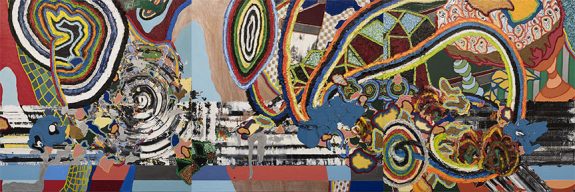
and shellac on paper and wood panels. Embracing diverse, even oppositional pictorial languages, Harvey orchestrates what he calls a ‘precarious equilibrium,’ whereby he allows collisions of paint's myriad behaviors to determine content. Paradigms of transmutation and a fresh description of synthesized nature, they switch back and forth between allusions to cosmic vastness and the subatomic.”
# # #
David M. Roth, Squarecylinder’s editor and publisher, compiled this year-end roundup from reviews written by Mark Van Proyen, Maria Porges, Renny Pritikin, Soraya Murray, Derek Conrad Murray, Julia Couzens, Max Blue, Justin Manley and himself. Thanks, also, to the many donors and advertisers who, over the past 11 years, have helped make Squarecylinder possible. If you like what you read on Squarecylinder there's a way to support it:
